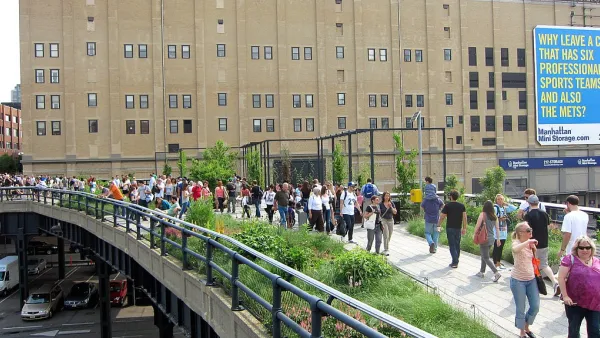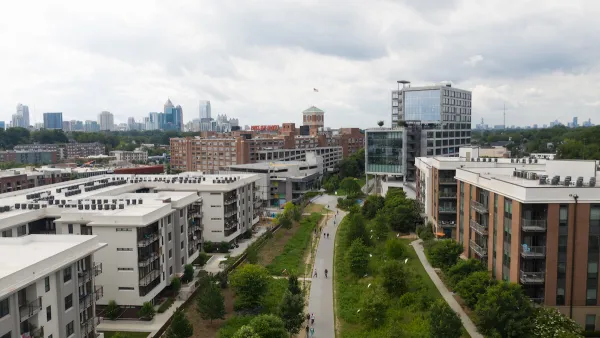For one author, the key is focusing on affordable housing from the start.

Writing in The Conversation, author of Red Hot City: Housing, Race, and Exclusion in Twenty-First Century Atlanta Dan Immergluck describes how “planning and policy decisions [in Atlanta] have promoted a heavily racialized version of gentrification that has excluded lower-income, predominantly Black residents from sharing in the city’s growth.”
In particular, Immergluck faults the Atlanta BeltLine multiuse trail, a repurposed former railway corridor that has in some ways revitalized the surrounding area at the expense of low-income households who were pushed out. Immergluck calls this “green gentrification” that occurs when new green spaces and park facilities lead to higher housing costs and displacement. “If cities fail to prepare for these effects, gentrification and displacement can transform lower-income neighborhoods into areas of concentrated affluence rather than thriving, diverse communities.”
The BeltLine, first proposed in the early 2000s, became a transformative project for Atlanta. In 2007, Immergluck found that property values near the BeltLine were indeed going up faster than in other areas. “This meant that property taxes rose for many lower-income homeowners, and landlords of rental properties were likely to raise rents in response.”
As the article explains, “Rather than focusing on securing land for affordable housing when values were low, Atlanta BeltLine, Inc. prioritized building trails and parks.” Pledges to support affordable housing went unfulfilled. “In 2017 the Atlanta Journal-Constitution ran a high-profile investigative series documenting that the BeltLine had produced just 600 units of affordable housing in 11 years – far off the pace required to meet its target of 5,600 by 2030.”
For Immergluck, the lesson for other cities and developments is clear. “In my view, the most important takeaway is the importance of front-loading affordable housing efforts in connection with major redevelopment projects.” He also suggests limiting property tax increases for low-income homeowners and giving tax breaks to landlords who keep rental housing units affordable.

National Parks Layoffs Will Cause Communities to Lose Billions
Thousands of essential park workers were laid off this week, just before the busy spring break season.

Retro-silient?: America’s First “Eco-burb,” The Woodlands Turns 50
A master-planned community north of Houston offers lessons on green infrastructure and resilient design, but falls short of its founder’s lofty affordability and walkability goals.

Delivering for America Plan Will Downgrade Mail Service in at Least 49.5 Percent of Zip Codes
Republican and Democrat lawmakers criticize the plan for its disproportionate negative impact on rural communities.

Test News Post 1
This is a summary

Test News Headline 46
Test for the image on the front page.

Balancing Bombs and Butterflies: How the National Guard Protects a Rare Species
The National Guard at Fort Indiantown Gap uses GIS technology and land management strategies to balance military training with conservation efforts, ensuring the survival of the rare eastern regal fritillary butterfly.
Urban Design for Planners 1: Software Tools
This six-course series explores essential urban design concepts using open source software and equips planners with the tools they need to participate fully in the urban design process.
Planning for Universal Design
Learn the tools for implementing Universal Design in planning regulations.
EMC Planning Group, Inc.
Planetizen
Planetizen
Mpact (formerly Rail~Volution)
Great Falls Development Authority, Inc.
HUDs Office of Policy Development and Research
NYU Wagner Graduate School of Public Service





























